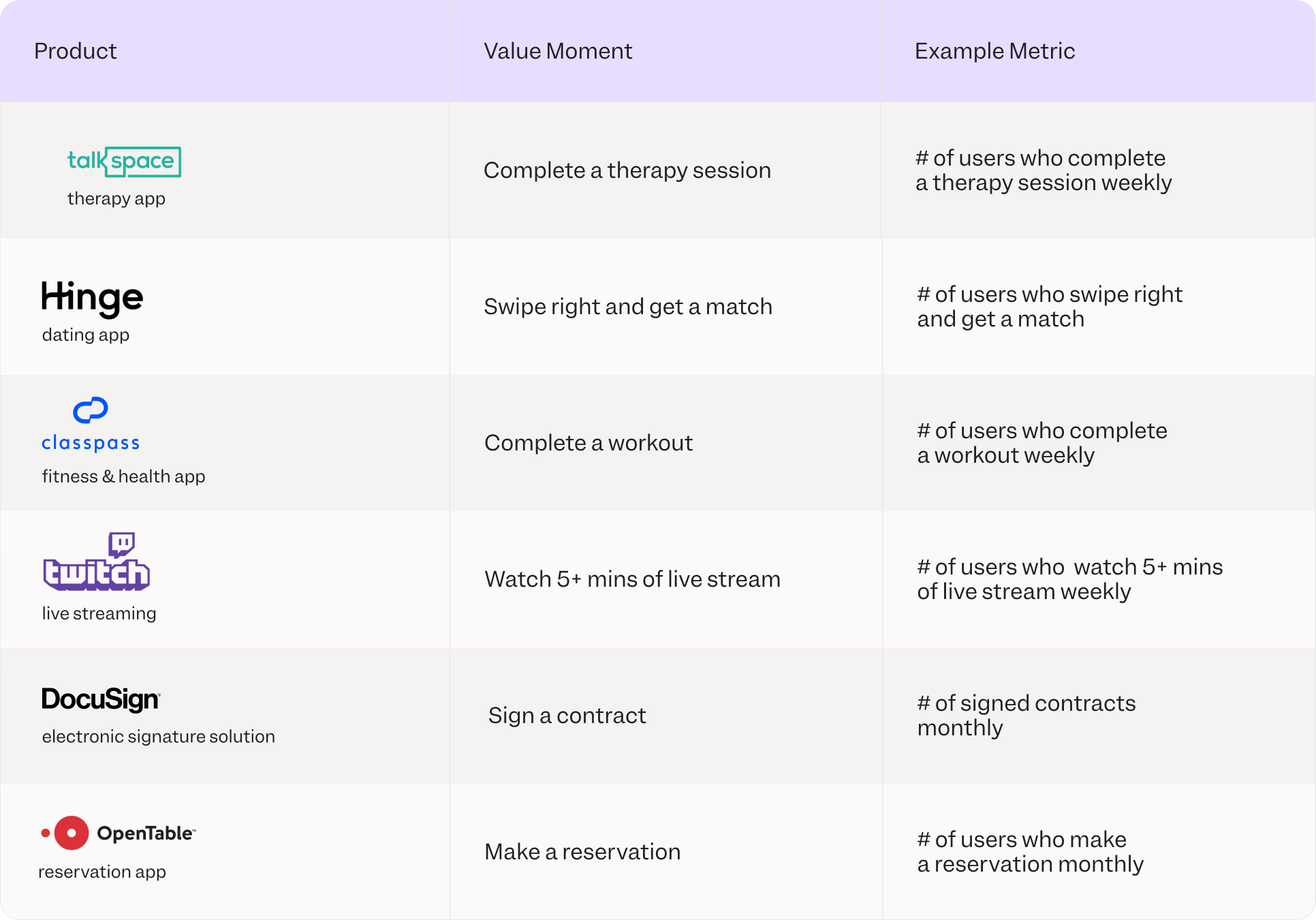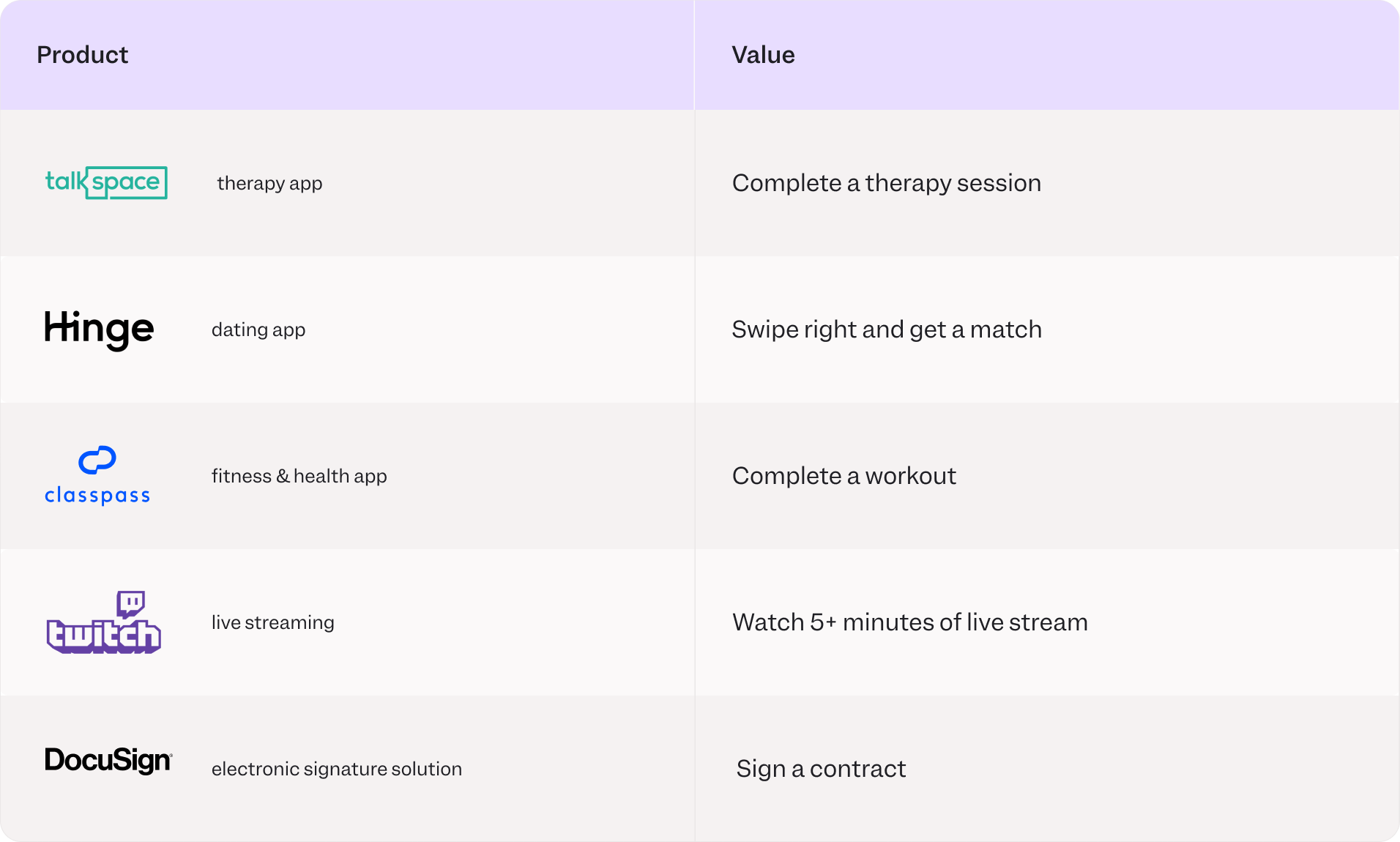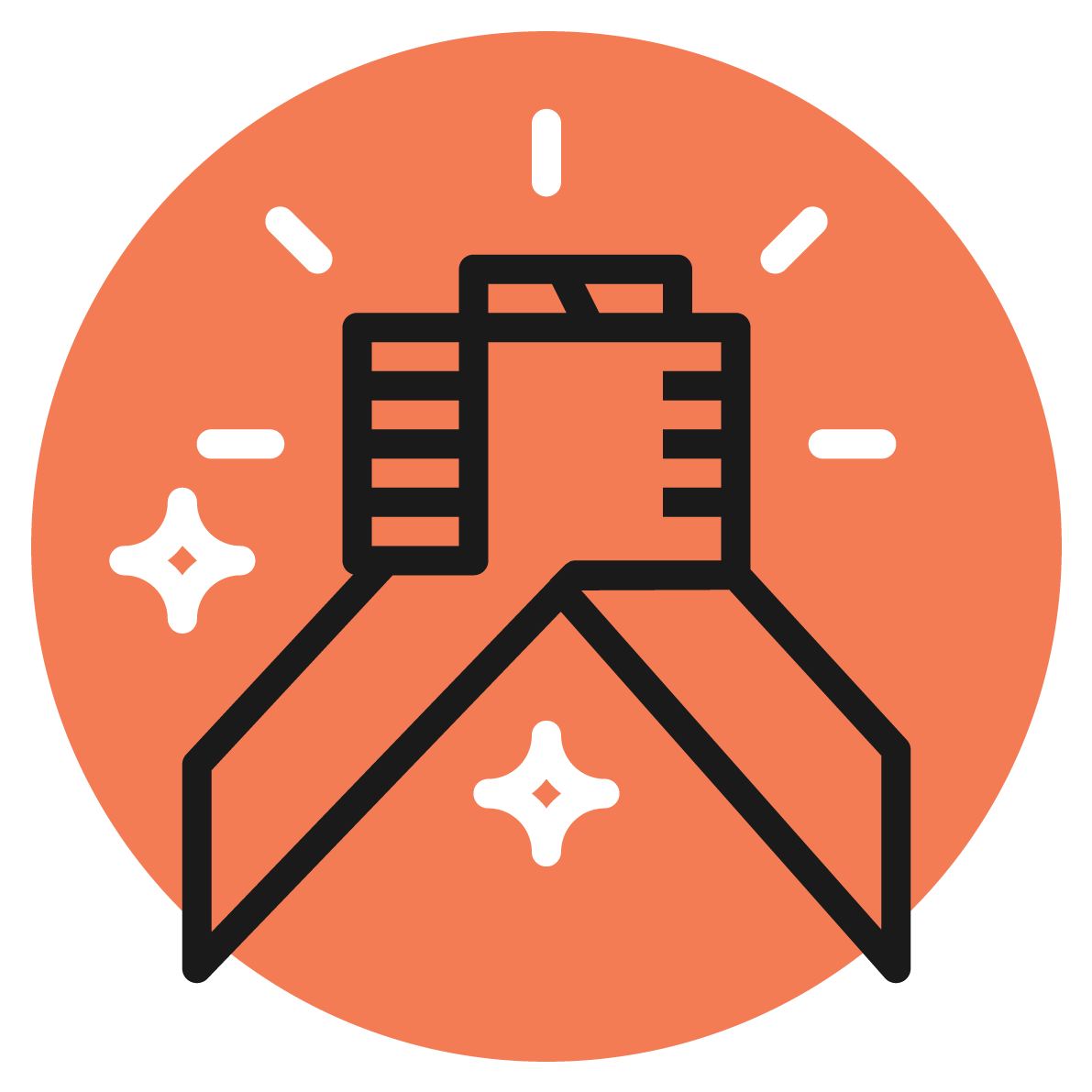How does my product bring value?
The idea of value (as opposed to physical or digital features) is at the core of every product. If customers find value in your product, they use it. If they don’t, they stop using it. This simple truth explains why defining your product’s value comes first. Later in the book, we’ll cover many questions that you can answer with product analytics. But this question—Why are people using my product?—is not one of them, because no product analytics tools can define that for you.
But you probably already know why. Depending on your product, your customers usually have very clear and obvious reasons for using it. Fitbit users, for example, buy the watch and download the Fitbit app because they are looking for motivation. Netflix users keep coming back for entertainment. For over four and a half million Weight Watchers users, the app fills the need for community and support.
To understand your product’s value, you need to step back and ask, “What are my users hoping to do with my product? And what is my product really about?”

If you look at the most successful digital products today, they have one thing in common: they make it easier, cheaper, or more convenient for people to live their lives and get what they want. Identifying the specific behaviors that indicate that people are getting value is key to building a lasting product. Further, knowing when your users get value from your product can help you clear the path to that critical value moment for more users, which means more people get value and are willing to keep coming back, and perhaps even pay.
How can I monetize my product?
A classic value exchange is money in return for a product or service. Depending on your profit model, the most common types of value exchange are:
The moment of value exchange between a user and a business isn’t always tied (directly) to money. User attention (monetized, for example, through advertising) and data (used for training machine learning models) can be just as valuable. For product managers, these new types of value exchange require new ways of thinking about user experience and clear communication around data-sharing practices to earn people’s trust.
These profit models, or different ways of getting money in exchange for value in the digital world, are now so sophisticated and complex that understanding how your users derive value from your product becomes even more important. If you’re not using product analytics, you’re going to have a hard time grappling with this complexity. Without easy access to the data you need to make decisions quickly, it’s challenging to grow and successfully monetize your business.
Can product value always be measured and analyzed?
Yes. No matter how “fuzzy” or intangible the value may appear, you can apply quantitative measurements to any product. For example, while it’s tough to gauge precisely how much fun and entertainment users are getting from a video streaming service, you can measure how many videos they watch weekly, or how much time is spent on each.
Similarly, while finding a 100% precise way of measuring anxiety reduction in users of a meditation app might seem difficult without a qualitative study, you can measure completion rates for meditation sessions, and the percentage of people coming back each week to use the app again and again. In addition, you can observe in what ways people who do come back behave differently from those who don’t.
In short, fuzzy measurement is still a useful measurement if it tells you more than you knew before.¹
A helpful tool in measuring value for your product is defining the so-called “value moments”—user events or actions that indicate that a person is getting value out of your product.
What is a value moment?
Your product’s value moment is an event, an action, or a series of events and actions that represent the moment that a user found value in your product. Here are a few examples of value moments:

Depending on your product, a user journey might look very different. To get to the value moment for the first time, some user flows require registration, verification, adding friends, or entering credit card information before a user can “activate” and experience the product’s value for the first time. (Reforge alumni will recognize this as the “setup moment.”) This initial journey to value is critical: the more quickly you can get your users to value, and the more you can signal during that journey what value is to come, the better the chances they’ll stick around for more value moments.
It’s important to remember that, in designing a user journey toward the value moment, the steps you ask a user to take should reflect your unique brand values. For example, the CTO of Primephonic, the Amsterdam-based music streaming service sometimes called “the Spotify of classical music,” has this to say about requiring a lot of user information at the outset of the relationship:
Which metrics should I pick to measure product success?
Think of your value moment as a building block for successful product adoption. More value moments means a user has more opportunities to build a habit around your product and remain a customer in the long term. Turning value into a single key metric (known as the “north star metric” or “focus metric”) can help your teams set tangible goals and measure what really matters.
To learn more about defining your focus metric, check out Mixpanel’s Guide to Product Metrics.

Often, a rookie PM will attempt to track every single user event, come up with an array of metrics, and consider them all equally. This is risky because it can give you a false sense of how many active users you have and how often they get value from your product. Is everyone who logs into a messaging app, clicks into a profile, changes status, and goes to settings truly active and getting value? Maybe it’s only those who send messages? Prioritizing a single value moment is hard, but it’s a more straightforward way of gauging the value that your product brings to market.
Though initially your retention numbers might dribble down if you are no longer considering every single user action as a valuable moment, in the long term, retention and value are intrinsically the same. So, for a PM, focusing on value at all times is a surefire way to set up for long-term retention.
Where do product leaders typically go wrong when defining their value metric?
When it comes to choosing product metrics, what’s the difference between a good PM and a great PM?
1. Hubbard, Douglas W. How to Measure Anything: Finding the Value of ‘Intangibles’ in Business, 3rd ed. Wiley: 2014.
![pa-img01[3]](https://mixpanel.com/wp-content/uploads/2020/09/pa-img013.png)









